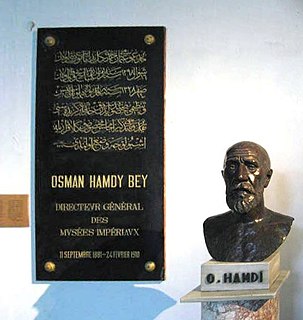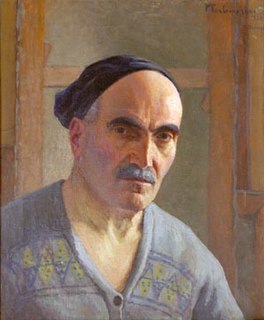 W
WAbdulmejid II was the last Caliph of the Ottoman Dynasty, nominally the 37th Head of the Ottoman Imperial House from 1922 to 1924.
 W
WYuhanna al-Armani al-Qudsi was an artist of Armenian origin in Ottoman Egypt. He is most notable for his religious works, especially his Coptic icons that decorate The Hanging Church in Old Cairo.
 W
WHrand Hovsep Alyanak was an Ottoman Armenian painter and author.
 W
WCharles Garabed Atamian was an Ottoman-born French painter of Armenian ethnicity.
 W
WDikran Chökürian was an ethnic Armenian writer and teacher, editor of the journal Vostan (Ոստան) and a victim of the Armenian Genocide.
 W
WSarkis Diranian was an Armenian orientalist painter. Originally from the Ottoman Empire, he was established for many years in Paris.
 W
WArshak Abrahami Fetvadjian was an Armenian artist, painter and designer. He is best known for his watercolor paintings of the architectural monuments of the medieval Armenian city of Ani, and for designing the currency and postage stamps of the first Republic of Armenia (1918–1920). As a result of over 20 years devoted to art, Fetvadjian produced no less than 2,000 works, varying from lucid pencil drawings to painstakingly accurate watercolors, that depicted historically significant churches, monasteries, chapels and palaces. A considerable number of his other works were also portraits of Armenians at the turn of the 20th century.
 W
WMüfide Kadri Hanım was a Turkish painter and composer; one of the first female artists in Turkey and the first professional female art teacher in the Ottoman Empire. She created mostly portraits and scenes with figures.
 W
WZareh Kalfayan was an Ottoman painter of Armenian descent.
 W
WVartan Makhokhian was an Armenian painter who lived in the Ottoman Empire and France and was known for his marine paintings. After completing his studies at the Berlin Academy of Arts, he traveled and exhibited his art in France, Germany, Egypt and elsewhere. His art is displayed in various museums throughout the world.
 W
WMihri Müşfik Hanım was an Abkhazian princess. She was one of the first and most renowned Turkish female painters. She was recognized especially for her portraits, including popular figures Mustafa Kemal Atatürk and Pope Benedict XV.
 W
WYenovk Stepani Nazarian was an Armenian portrait and landscape painter. Many of his were done in pastels and have not survived.
 W
WYervant Voskan, also known as Osgan Efendi was a renowned Ottoman painter, sculptor, instructor, and administrator of Armenian descent. He is considered the first sculptor of Turkey.
 W
WOsman Hamdi Bey was an Ottoman administrator, intellectual, art expert and also a prominent and pioneering painter. He was also an accomplished archaeologist, and is regarded as the pioneer of the museum curator's profession in Turkey. He was the founder of Istanbul Archaeology Museums and of Istanbul Academy of Fine Arts, known today as the Mimar Sinan University of Fine Arts.
 W
WHovsep Pushman was an American artist of Armenian background. He was known for his contemplative still lifes and sensitive portraits of women, often in exotic dress. He was most closely associated during his lifetime with the Grand Central Art Galleries, which represented him from its opening in 1922 until his death in 1966.
 W
WAhmed Ali Pasha, better known as "Şeker" Ahmed Pasha, was an Ottoman painter, soldier and government official. His nickname "Şeker" meant "sugar" in Turkish, which he earned due to his very easy-going nature.
 W
WSüleyman Seyyid Bey was a Turkish painter and art teacher, primarily known for his still-lifes.
 W
WPanos Terlemezian was an Armenian landscape and portrait painter; known for his support of Armenian nationalist causes.
 W
WLéon Arthur Tutundjian was an Armenian painter who reached fame in France.
 W
WYervant Voskan, also known as Osgan Efendi was a renowned Ottoman painter, sculptor, instructor, and administrator of Armenian descent. He is considered the first sculptor of Turkey.
 W
WGarabet Yazmaciyan was a prominent Ottoman painter of Armenian descent.